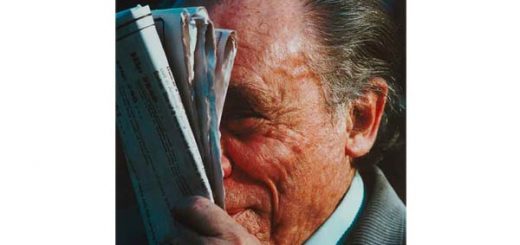VICTOR HUGO – MAN AND WOMAN
.
..
…
Victor Hugo
Man and woman
Man is the highest of creatures.
The woman is the most sublime of ideals.
God made for man a throne for the woman an altar.
The throne exalts, the altar sanctifies.
Man is the brain.
The woman’s heart.
The brain produces the light, the heart produces the Love
Fruitful Light, Love resurrects.
The man is strong by reason.
The woman is invincible by tears.
The reason convinces, tears moving.
Man is capable of all heroism.
Woman of all martyrdom.
Heroism ennobles; sublimates martyrdom.
Man has supremacy.
The woman’s preference.
Supremacy is strength, represents the right preference.
The man is a genius.
The woman an angel.
Genius is immeasurable, the angel indefinable.
The aspiration of man is supreme glory.
The aspiration of woman is extreme virtue.
The glory makes everything great, virtue makes everything divine.
Man is a code.
A gospel woman.
The code corrects, the gospel perfects.
Man thinks.
She dreams.
To think is to have a larva in the skull; dream is to have a halo on his forehead.
Man is an ocean.
The woman is a lake.
The ocean has the adorning pearl, the lake, dazzling poetry.
Man is the flying eagle.
She is the nightingale that sings.
Flying is dominate space. Sing is to conquer the soul.
The man is a Temple.
The woman is the Tabernacle.
Before the temple we discover ourselves, we kneel before the Tabernacle.
In short: the man is placed where the land ends.
The woman where heaven begins.
…
..
.
Victor Hugo – Man and woman
Victor Hugo
Victor Marie Hugo (26 February 1802 – 22 May 1885) was a French poet, novelist, and dramatist of the romantic movement. Victor Hugo is considered to be one of the greatest and best-known French writers. Outside of France, his most famous works are the novels Les Misérables, 1862, and The Hunchback of Notre-Dame (French: Notre-Dame de Paris), 1831. In France, Hugo is known primarily for his poetry collections, such as Les Contemplations (The Contemplations) and La Légende des siècles (The Legend of the Ages).
Victor Hugo was at the forefront of the romantic literary movement with his play Cromwell and drama Hernani. Many of his works have inspired music, both during his lifetime and after his death, including the musicals Notre-Dame de Paris and Les Misérables. He produced more than 4,000 drawings in his lifetime, and campaigned for social causes such as the abolition of capital punishment. Though a committed royalist when he was young, Hugo’s views changed as the decades passed, and he became a passionate supporter of republicanism; his work touches upon most of the political and social issues and the artistic trends of his time. He is buried in the Panthéon in Paris. His legacy has been honoured in many ways, including his portrait being placed on French currency. (wikipedia)
Works
Published during Hugo’s lifetime
Cromwell preface only (1819)
Odes et poésies diverses (1822)
Odes (1823)
Han d’Islande (1823), (Hans of Iceland)
Nouvelles Odes (1824)
Bug-Jargal (1826)
Odes et Ballades (1826), (Odes and Ballads)
Cromwell (1827)
Les Orientales (1829), (Orientalia)
Le Dernier jour d’un condamné (1829), (The Last Day of a Condemned Man)
Hernani (1830)
Notre-Dame de Paris (1831), (The Hunchback of Notre-Dame)
Marion de Lorme (1831)
Les Feuilles d’automne (1831), (Autumn Leaves)
Le roi s’amuse (1832)
Lucrezia Borgia (1833)
Marie Tudor (1833)
Littérature et philosophie mêlées (1834), (A Blend of Literature and Philosophy)
Claude Gueux (1834)
Angelo, Tyrant of Padua (1835)
Les Chants du crépuscule (1835), (Songs of the Half Light)
La Esmeralda (only libretto of an opera written by Victor Hugo himself) (1836)
Les Voix intérieures (1837)
Ruy Blas (1838)
Les Rayons et les Ombres (1840)
Le Rhin (1842)
Les Burgraves (1843)
Napoléon le Petit (1852), (Napoleon the Little)
Les Châtiments (1853)
Les Contemplations (1856), (The Contemplations)
Les Tryne (1856)
La Légende des siècles (1859), (The Legend of the Ages)
Les Misérables (1862)
William Shakespeare (1864)
Les Chansons des rues et des bois (1865), (Songs of Street and Wood)
Les Travailleurs de la Mer (1866), (Toilers of the Sea)
La voix de Guernsey (1867)
L’Homme qui rit (1869), (The Man Who Laughs)
L’Année terrible (1872)
Quatrevingt-treize (Ninety-Three) (1874)
Mes Fils (1874)
Actes et paroles – Avant l’exil (1875)
Actes et paroles – Pendant l’exil (1875), (Deeds and Words)
Actes et paroles – Depuis l’exil (1876)
La Légende des Siècles 2e série (1877)
L’Art d’être grand-père (1877), (The Art of Being a Grandfather)
Histoire d’un crime 1re partie (1877), (History of a Crime)
Histoire d’un crime 2e partie (1878)
Le Pape (1878)
La Pitié suprême (1879)
Religions et religion (1880), (Religions and Religion)
L’Âne (1880)
Les Quatres vents de l’esprit (1881), (The Four Winds of the Spirit)
Torquemada (1882)
La Légende des siècles Tome III (1883)
L’Archipel de la Manche (1883)
Published posthumously
Théâtre en liberté (1886)
La Fin de Satan (1886)
Choses vues (1887)
Toute la lyre (1888), (The Whole Lyre)
Amy Robsart (1889)
Les Jumeaux (1889)
Actes et Paroles – Depuis l’exil, 1876–1885 (1889)
Alpes et Pyrénées (1890), (Alps and Pyrenees)
Dieu (1891)
France et Belgique (1892)
Toute la lyre – dernière série (1893)
Les fromages (1895)
Correspondences – Tome I (1896)
Correspondences – Tome II (1898)
Les années funestes (1898)
Choses vues – nouvelle série (1900)
Post-scriptum de ma vie (1901)
Dernière Gerbe (1902)
Mille francs de récompense (1934)
Océan. Tas de pierres (1942)
L’Intervention (1951)
Conversations with Eternity (1998)
(wikipedia)























